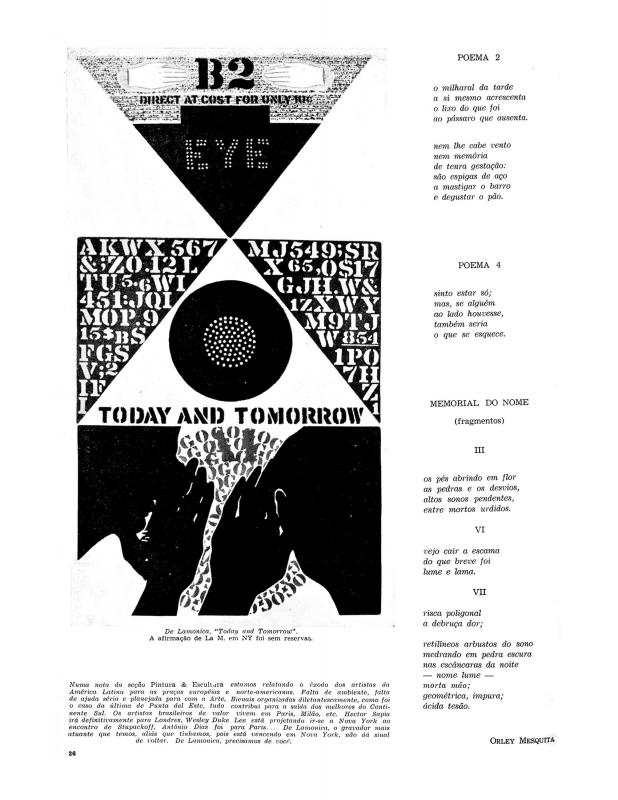As the result of this article, the thinking of Luis Felipe Noé (b. 1933), particularly his reflections on the exodus of Latin American artists, was able to circulate in Brazil. The article was pertinent since Brazil, like other countries in the region, was experiencing this phenomenon at the time.
In Brazil, the political situation following the military coup, which ushered in a dictatorship that lasted from 1964 to 1985, was one of the main reasons that artists were leaving the country. The dictatorship not only abolished many basic civil rights, but also meant widespread censorship. This situation became severe in the late sixties following the Ato Institucional No. 5 (1968), a decree that did away with the civil rights granted by the constitution. The magazine Mirante das Artes indirectly condemned this state of affairs by publishing this article by Noé, an artist from the Rio de la Plata region. Its condemnation was more direct when it addressed the Brazilian artistic diaspora, specifically the departure of artists like Wesley Duke Lee, Antonio Dias, Roberto De Lamônica, and many others [see ICAA digital archive: “Numa nota da seção Pintura & Escultura” (doc. no. 1111180) y “HIRSCH: fugitivo do Brasil, malgré soi” (doc. 1111195)].
In the late sixties, whether at their own initiative or in response to invitations from foreign critics and institutions, many Brazilian artists whose careers had been curtailed, headed to cities like New York, London, Paris, and Milan to pursue their careers on an international level. In reaction to what was a grim panorama, many artists did not set foot in Brazil again until after 1978, when the amnesty was issued.
Twelve issues of the magazine Mirante das Artes were published in São Paulo in 1967 and 1968. The editor of the magazine was Pietro Maria Bardi, director of the Museu de Arte de São Paulo (MASP). The far-reaching publication was as democratic as possible considering the political situation in Brazil at the time. In the environment of fear instilled by censorship, the best strategy to communicate what was happening domestically in both politics and the arts was to publish information on similar situations in foreign countries.
Having participated in the Otra Figuración group (1961–64), Luis Felipe Noé eschewed painting after a 1965 show in the New York branch of the Bonino Gallery. At around that time, Noé published Antiestética, a book that reflects his contrarian personality. That work clearly expresses and theorizes his thinking regarding concepts akin to the ones addressed in the text discussed here (ideas like “the nationality of art” and “the contemporary process”). It also explores notions Noé developed regarding “permanent movement” or “chaos as structure.” Noé resumed painting in 1976, a difficult year as another military coup seized Argentina, forcing the artist to seek exile in Paris. He lives in Buenos Aires and is now a widely acclaimed painter.


